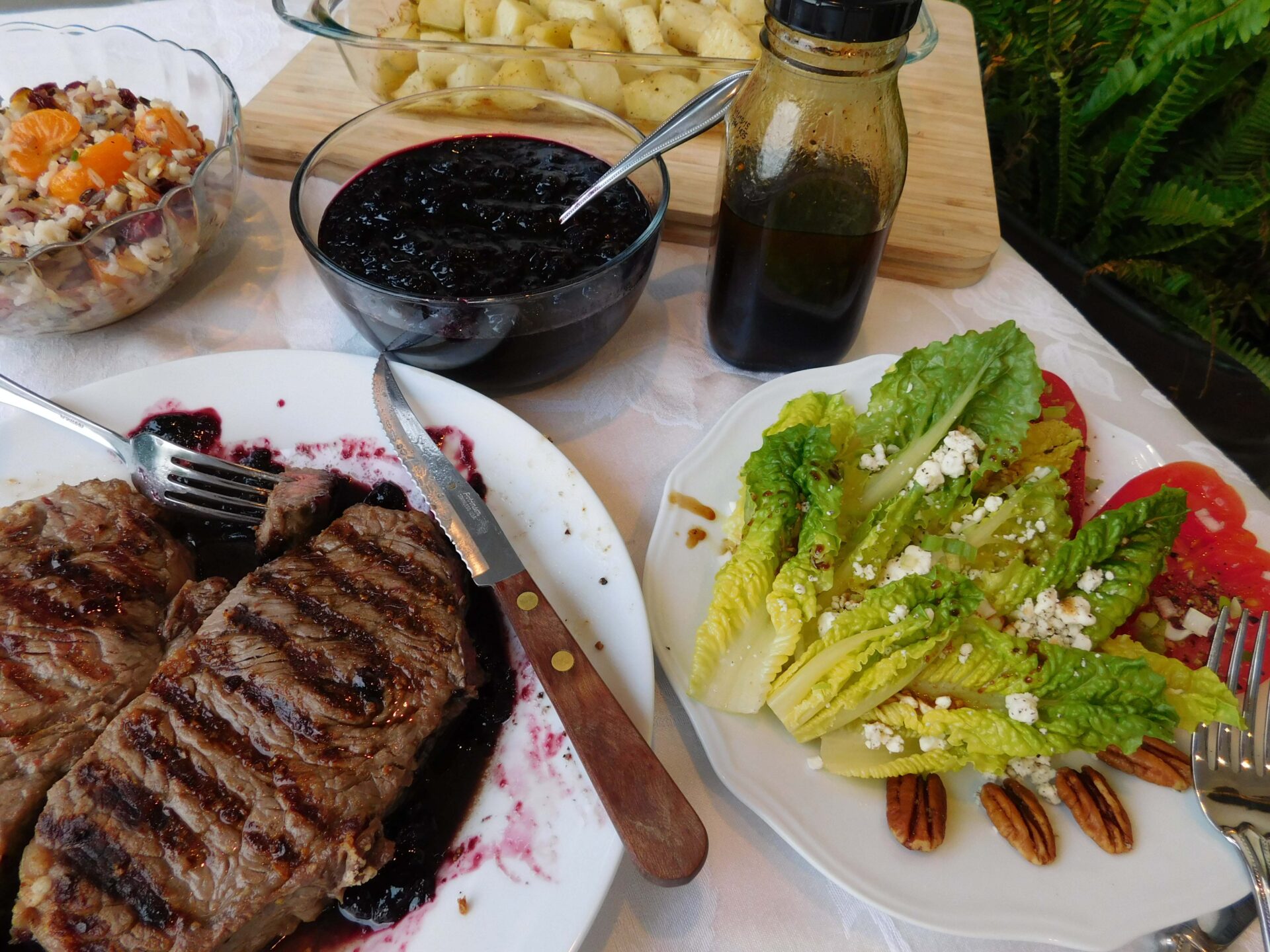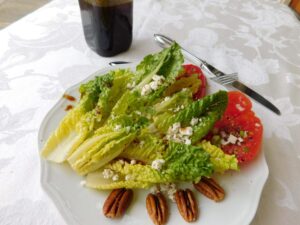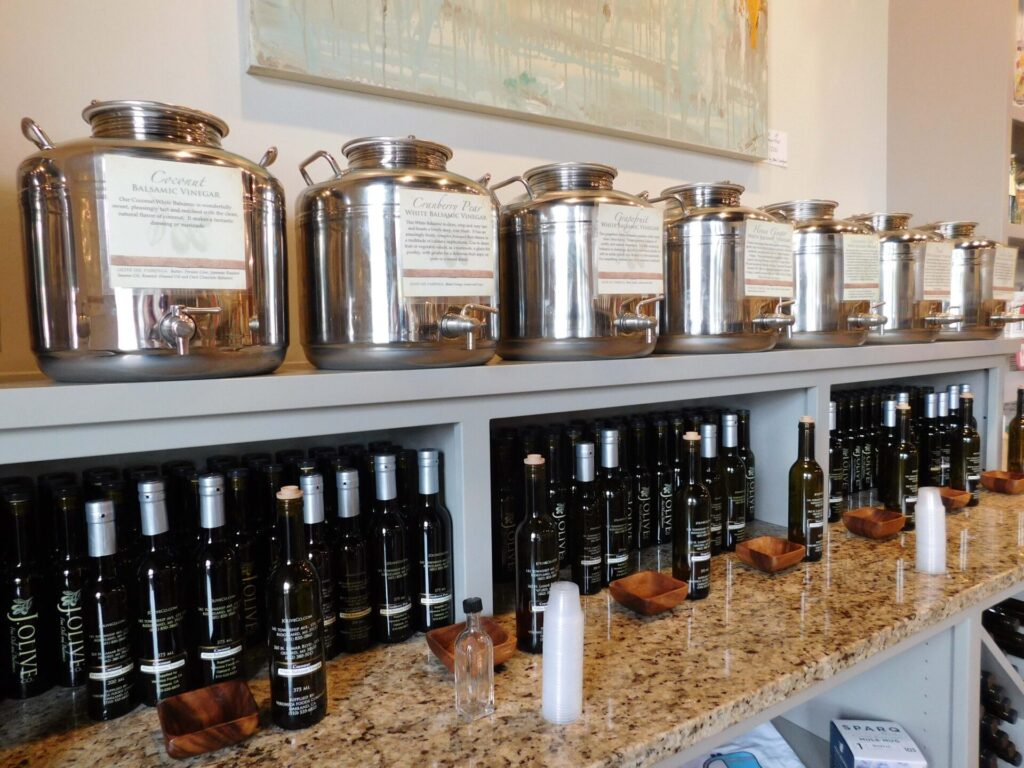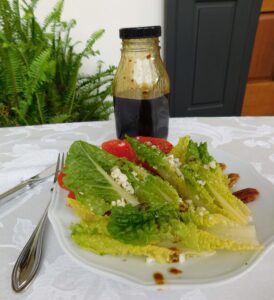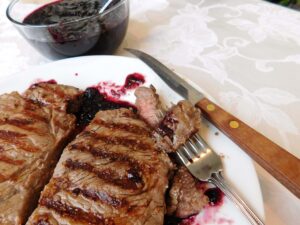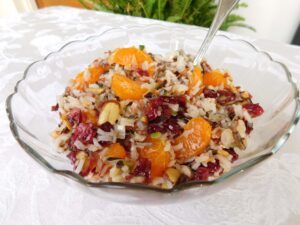Eating Oxford
On Cooking Southern: The Mother of All Condiments Flavors Food and More…
SOUTHERNISM OF THE WEEK
Ain’t it a hoot: Related to “give a hoot” and “whoop and holler”… Something is a hoot if it is funny or curiously appealing, requiring a burst of laughter. We don’t give a hoot if we don’t care one way or another… And the classic “two whoops (hoots) and a holler” derives from staccato shouts of derision, sounding like an owl…
A wise cook knows that some culinary ingredients are better than others. This is particularly true for olive oils and vinegars, which go together like, well… oil and vinegar.
And the uses for vinegars, like olive oils, extend far beyond the salad bowl.
Vinegar is an acetic acid that occurs when acetic bacteria ferment fruits or grains past the alcohol stage. Considered one of Mother Nature’s most enduring miracles, it’s been made for thousands of years in most civilizations. Vinegar is a natural disinfectant and agricultural herbicide. It has restorative and preventive medical uses for maintaining human health, which is why many cultures incorporate pickled condiments into every meal or recommend regular consumption of a vinegar-based beverage.

Gina O’Connor fills “happy-size” bottles at J. Olive, Oxford’s own purveyor of fine olive oils and balsamic vinegars.
All vinegars have a characteristic tart or sour taste resulting from fermentation. Most also retain a hint of flavor notes imparted by the fruit or grain.
There’s a hierarchy of quality in the vinegar world. The workhorse is distilled white vinegar, made from distilled spirits. The eccentric but oh-so-useful uncle is apple cider vinegar. The slightly frowsy cousins include many of the wine and grain vinegars made from grapes, malt or beer.
And then there’s balsamic, the mother of all vinegars. Balsamic. It’s a name that arouses the taste buds of knowledgeable cooks and diners alike. Yet it’s neither a classic fermented vinegar nor a condiment containing one iota of balsam.
The word “balsamico” derives from the Latin and Greek, meaning “balsam-like,” inferring “restorative” and “curative.”
Traditional balsamic vinegar is made from grape syrup, not from grape wine. And the grapes are not just any ol’ grape. They must be trebbiano white grapes grown in a specific region of Italy. Genuine balsamic vinegar is made only in the Italian provinces of Modena and Reggio Emilia.
To kickstart the balsamic conversion, trebbiano grapes are pressed and the “must” (skins) is cooked until it reduces to 30 percent of the grape juice original volume. It’s transferred to wooden casks of oak, walnut, cherry, chestnut, ash, mulberry and juniper and other local hardwoods, to age for a minimum of 12 years, and often as long as 25 years. The length of aging, like that of fine whiskeys, affects the market price.
Acetic fermentation of the balsamic syrup sugar occurs during this aging process. As the syrup reduces in volume in the wooden casks, its flavors become more concentrated. The resulting 12-years-or-older deep red-brown syrupy condiment is delicious enough to consume in a shot glass, or drizzled onto fruits, hard cheeses and meats.
White balsamic is made from the same trebbiano white grape as the dark balsamic, but cooked at lower temperatures for a shorter time to avoid darkening, then aged in uncharred barrels to avoid further darkening. White balsamic is less sweet than dark balsamic and has a clean aftertaste.
Consumer demand for balsamic vinegar expanded beyond the Italian borders during the 1970s, as chefs from around the world discovered its culinary properties. As with olive oils and other highly specialized condiments, quality began diminishing in direct correlation to increasing popularity. Fake balsamic vinegar proliferated in the marketplace and still abounds.
That’s why, in 1987, Modena and Reggio Emilia were granted dual Domain of Control (DOC) so that only vinegars meeting their requirements in those two provinces of Italy can be called aceto balsamic tradizionale. The European Union also passed restrictions on balsamic vinegar labeling in the 1990s. It’s just like the restrictions for what may be labeled a Vidalia onion or real champagne.
Balsamic vinegars often are infused with herbs and fruits to create flavored balsamics. Flavors range across the taste spectrum, from chocolate to jalapeño pepper. When pairing flavored balsamics with infused olive oils, it’s best to pair complementary fruit and herbal notes. And at any meal, chefs recommend serving only one dish containing balsamic vinegar. The balsamic flavors can be overpowering.
Balsamic vinegar has an indefinite shelf life. If you discover clumps floating in your balsamic, don’t toss it. Balsamic’s “Mother” has come calling.
Inevitably, like our own, balsamic “mother” tends to appear when least expected, and it won’t hurt you. Those clumps of “mother” are the cellulose produced from the acetic bacteria. Mother is what is used as a starter for making new batches of balsamic vinegar (think yeast in sourdough bread starter). Vinegar containing mother is still good.
CHECK FOR THESE LABELS WHEN BUYING BALSAMIC VINEGAR:
- Aceto Balsamico Tradizionale (di Modena or di Reggio Emilia): Only these two regions are technically allowed to use this label. They are protected by the Italian Denominazione di origine protetta and the European Union’s Protected Designation of Origin.
- Balsamic Vinegar of Modena: An imitation of the traditional balsamic vinegar, with wine vinegar, and addition of coloring, caramel and sometimes guar gum or cornstarch as thickeners
- Condimento balsamico: MAY be made in Modena or Reggio Emilia, but often made by producers outside the region, and made without consortium supervision, although made with balsamic vinegar but without the traditional aging
LIFE IS SO MUCH BETTER WITH VINEGAR(S)
When writing this column, I cleaned out my pantry to identify how many vinegars I keep on hand. I discovered the usual suspects — distilled white vinegar and apple cider vinegar. I also found 12 other vinegars lurking in the darkness. I mean, seriously. Everyone needs rice vinegar and several types of red and white wine vinegar, and herb-flavored vinegars, right?
And then there were my balsamic vinegars… Uh oh. Only 6 left? I’m running low on aceto balsamico tradizionale. And I’m totally out of blood orange…. It’s definitely time to make a shopping run to J. Olive.
CLASSIC BALSAMIC VINAIGRETTE
In my opinion, balsamic vinaigrette is too flavorful to combine with fresh mozzarella and summer-ripe tomatoes, unless added sparingly as a few drops of condiment on the side. Drizzle sparingly over mixed greens and toss to blend.
3/4 c extra virgin olive oil
1/4 traditional dark balsamic vinegar
2 T water
1/2 to 1 tsp honey
1 large clove garlic, smashed and minced
3/4 tsp kosher salt
1/8 tsp ground black pepper
Combine all ingredients together in a glass jar. Cover tightly with lid and shake well to blend. Use at room temperature, but store unused leftovers tightly covered in fridge for up to a week. This pairs beautifully with Mediterranean herbed feta crumbles.
BALSAMIC BLUEBERRY REDUCTION GLAZE
This is delicious served as a condiment with a char-grilled steak, burger or venison. It’s sweet enough to drizzle on vanilla ice cream as well.
3 c fresh blueberries
3/4 to 1 c white granulated sugar
1/2 c good quality traditional balsamic vinegar
Combine the ingredients in a medium saucepan. Mash the blueberries with a potato masher. Cook on medium heat for 15 minutes on a rolling boil, stirring and mashing occasionally to pulverize the berry skins and prevent sticking. Turn off heat and serve as a glaze or condiment with grilled steak; or cool and drizzle over vanilla ice cream. Store covered in the fridge for up to two weeks.
ROASTED LEMON BALSAMIC POTATOES
Feel free to pair different herb-infused balsamics and oils.
2 large russet potatoes, peeled and cut into wedges
Lemon-infused balsamic vinegar
Tuscan herb-infused olive oil
1 tsp dried Tuscan herbs
Sea salt
Fresh ground black pepper
Preheat oven to 425˚F. Line a 9-by-13-inch baking pan with foil. Whisk the olive oil and balsamic vinegar together. In a separate bowl, combine the Tuscan herbs, salt and pepper.
Place the cut potato wedges in a large mixing bowl. Drizzle with the oil and vinegar mixture; toss to coat completely. Sprinkle with the seasoning mixture and toss again to coat evenly. Pour out into the prepared baking pan and spread evenly. Bake the potatoes on the middle rack for about 30 minutes or until edges are browned and potatoes are fork-tender, using a wooden spoon to turn the wedges after 15 minutes.
CRANBERRY RICE SALAD
This salad may be made with wild rice only, or with basmati only.
1-1/2 c rice blend (Texas basmati, brown, red and wild rice)
1/2 c dried cranberries
1/2 c sliced almonds
3 Halo/Cutie oranges, segmented, or Mandarin oranges
1 ripe pear, peeled and cut into wedges
1/4 c cranberry pear balsamic vinegar
2 T lemon-infused olive oil
1-1/2 T chopped green onion
1/2 tsp kosher salt
Salt and pepper to taste
Cook rice in rice cooker or according to package directions. Cool slightly and combine with other ingredients. Toss to blend well. Cover and refrigerate at least 2 hours. Remove from fridge 20 minutes before serving to bring up to room temperature. Will keep in fridge up to three days. Yields 6 servings.
Laurie Triplette is a writer, historian and accredited appraiser of fine arts, dedicated to preserving Southern culture and foodways. Author of the award-winning community family cookbook GIMME SOME SUGAR, DARLIN’, and editor of ZEBRA TALES (Tailgating Recipes from the Ladies of the NFLRA), Triplette is a member of the Association of Food Journalists, Southern Foodways Alliance and the Southern Food and Beverage Museum. Check out the GIMME SOME SUGAR, DARLIN’ website and follow Laurie’s food adventures on Facebook and Twitter.
Follow HottyToddy.com on Instagram, Twitter and Snapchat @hottytoddynews. Like its Facebook page: If You Love Oxford and Ole Miss…


